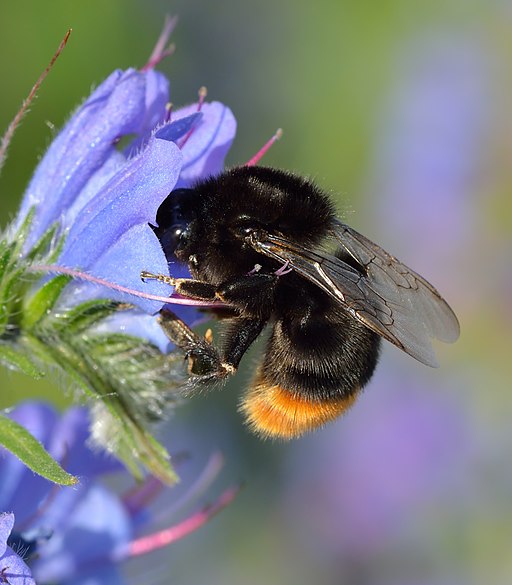They Might Be Mites
Nicotine has long been applied topically to plants and insects as a pesticide. Japanese chemists synthesized Imidacloprid, the first neonicotinoid, in the 1980s. In the 1990s, Bayer began large scale manufacturing and distribution of the pesticide, which was an advance over plain nicotine on account of its solubility in water and consequent ability to disseminate systemically throughout a plant for long-term protection from insect feeding, rather than being restricted to the temporary effects of topical application.

A red-tailed bumblebee (Bombus lapidarius) queen feeds on the flower of a blueweed (Echium vulgare) in Keila, northwestern Estonia. Photo by Ivar Leidus.
A 2013 cover by Circe Link and Christian Nesmith of “Your Move” by Yes. One could choose to hear the lyrics in the background chorus as “Give bees a chance” instead of “Give peace a chance”.
Now, after scientists and environmentalists sounded the alarm about neonicotinoids in the late 2000s and early 2010s, the pesticide giants have adopted the same methods, and their fall guy, as it were, is the lowly Varroa mite, a creature difficult to like in any scenario. Bayer and Syngenta and the rest have been aided and abetted in their disinformation campaign by the current presidential administration’s Environmental Protection Agency, an agency rendered ineffectual in protecting the environment by the hiring of right wing ideologues who are all too eager to sow goodwill among multinational corporations by not allowing the collapse of bee populations to get in the way of reaping enormous sums of money. After all, what are friends for?
— Izzy 
